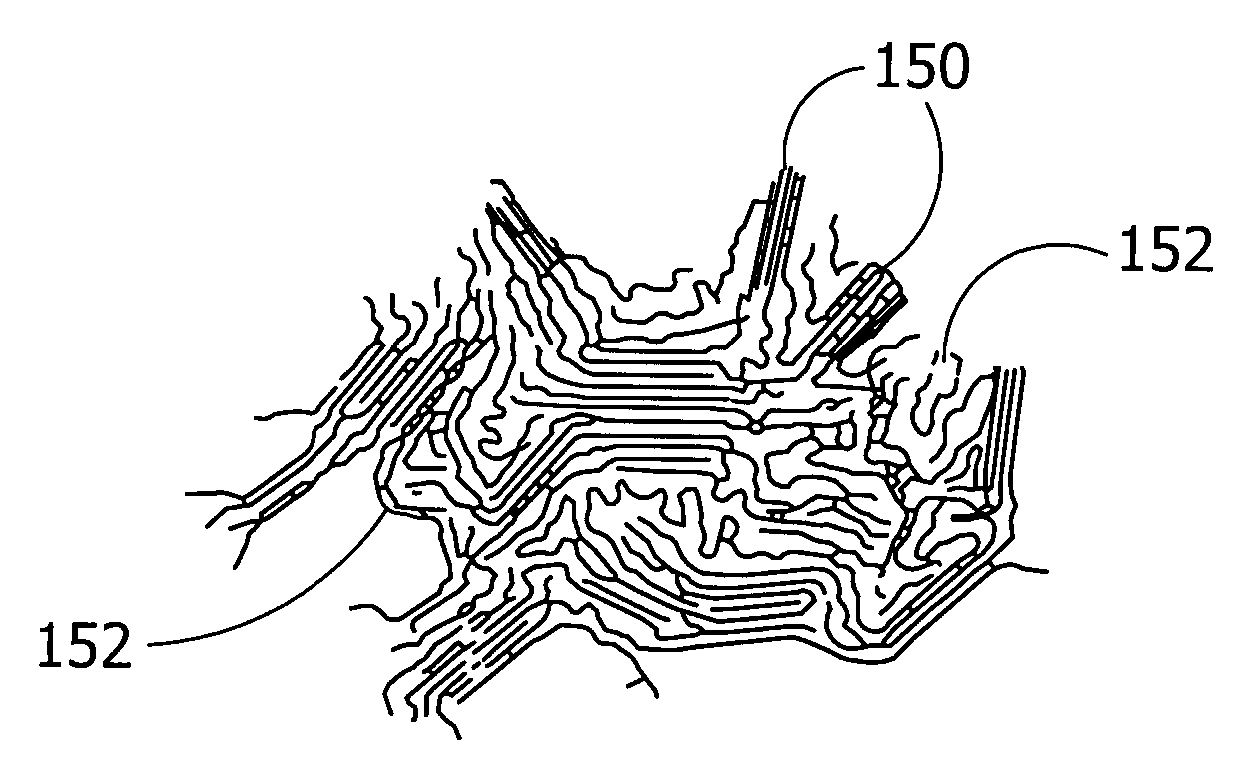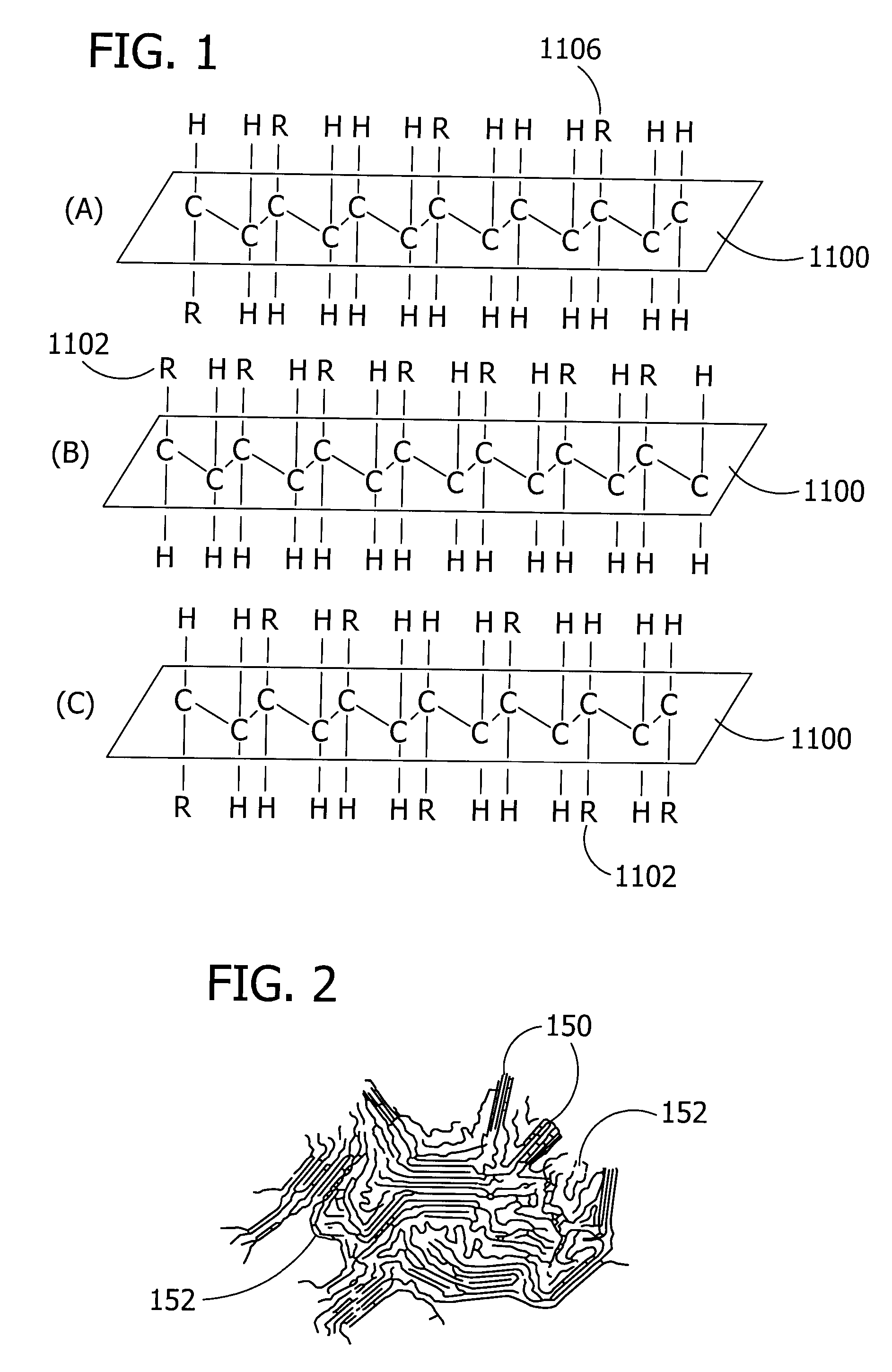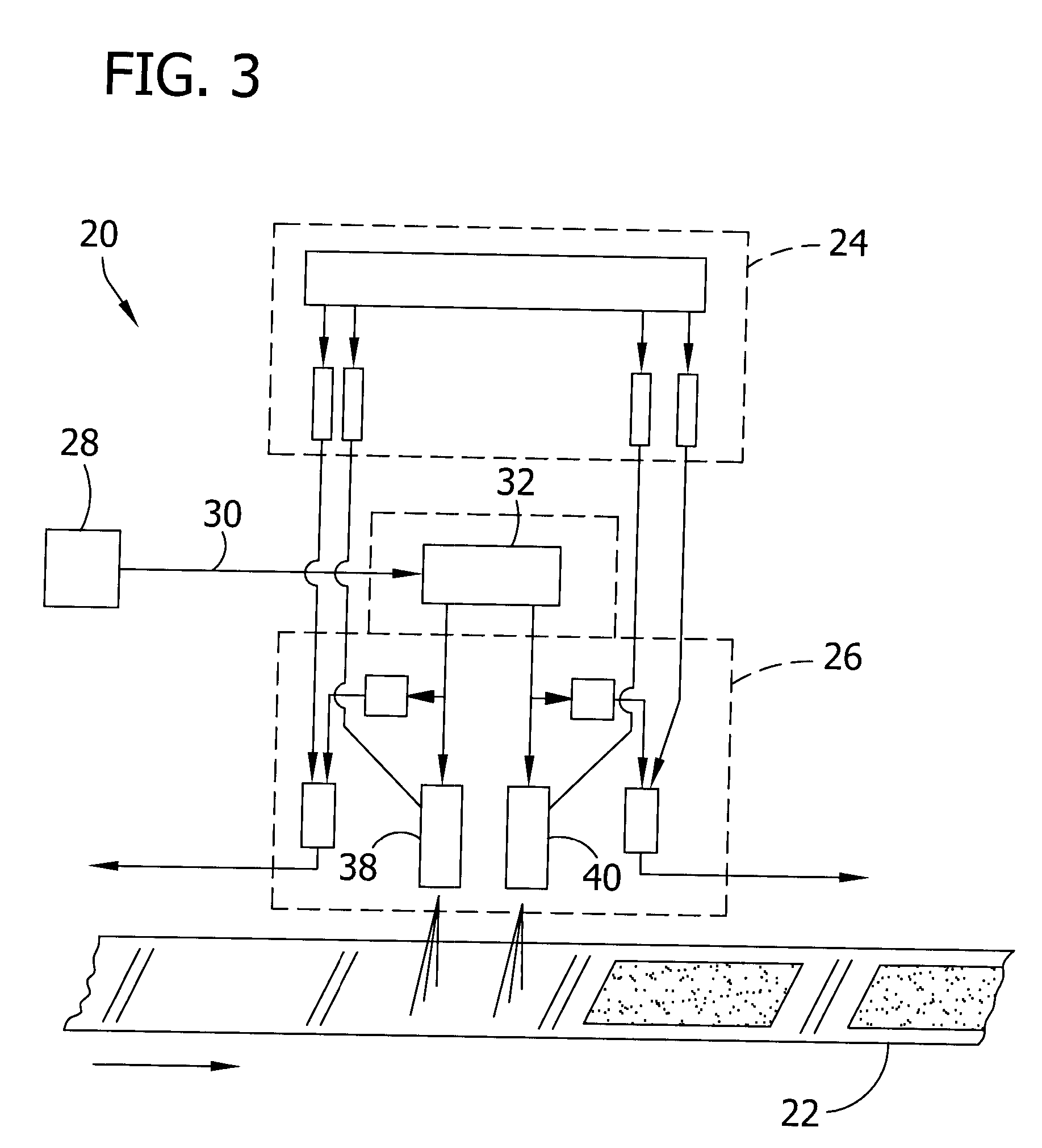Laminated absorbent product
a technology of absorbent products and absorbent materials, applied in the field of laminated absorbent products, to achieve the effect of improving performance characteristics, costing less, and improving performance characteristics
- Summary
- Abstract
- Description
- Claims
- Application Information
AI Technical Summary
Benefits of technology
Problems solved by technology
Method used
Image
Examples
example 1
[0156] Amorphous (i.e., atactic) polypropylene (received as slightly yellowish, transparent, elastomeric, small blocks) was obtained from Sigma-Aldrich, a business having offices in Milwaukee, Wis. The amorphous polypropylene had a weight-average molecular weight of about 28,000 and a number-average molecular weight of 8400 (determined by American Polymer as discussed above). Furthermore, the procured amorphous polypropylene was determined to have a Brookfield viscosity of 23 poise at a temperature of 190 degrees Celsius (determine as described in the Tests / Procedures section above); and a glass-transition temperature of −10 degrees Celsius (determined, as described above, using differential-scanning calorimetry at a heating rate of 10 degrees Celsius per minute).
[0157] Isotactic polypropylene was obtained from Sigma-Aldrich in the form of white, spherical particles. The isotactic polypropylene was determined to have a number-average molecular weight of about 20,000 and a weight-av...
example 2
[0160] A number of adhesives were used to bond two substrates together to make laminated structures using the procedures described above. The integrity of the bond between the two substrates was then tested using the static-peel test described above. In one evaluation, two necked-bonded laminate (NBL) substrates were bonded together. For additional detail on how NBLs and other neck-bonded materials are formed, see U.S. Pat. No. 5,336,545 to Morman, entitled “Composite Elastic Necked-Bonded Material,” which is hereby incorporated by reference in its entirety in a manner consistent with the present document.
[0161] Laminates comprising two adhesively-bonded NBL substrates were made and tested as described above. Each laminate comprised a first NBL substrate, as described above, which was adhesively bonded to a second NBL substrate. For this particular example, each of the adhesives was slot-coated on to one of the substrate layers when making the laminate. Each adhesive was applied at...
example 3
[0163] Laminates were made with approximately 0.4 osy polypropylene, spunbonded substrates and adhesive applied in a meltblown pattern at an application level of about 10 grams per square meter. The laminate was then run through ultrasonic-bonding equipment using the procedures described above to determine the accretion value for each of the tested adhesives.
[0164] For a laminate made using the blend of atactic polypropylene and isotactic polypropylene described in Example 1, no buildup or residue was observed on the surfaces of the anvil and horn after the ultrasonic-bonding equipment had been run for approximately 8 and 1-2 minutes.
[0165] For a laminate made using the H2800 hot-melt adhesive, about 0.4 to about 0.5 grams of buildup or residue was collected from the surfaces of the anvil and horn after the ultrasonic-bonding equipment had been run for approximately 8 and ½ minutes.
[0166] For a laminate made using the H2525A hot-melt adhesive, about 1.8 grams of buildup or residu...
PUM
| Property | Measurement | Unit |
|---|---|---|
| weight percent | aaaaa | aaaaa |
| weight percent | aaaaa | aaaaa |
| density | aaaaa | aaaaa |
Abstract
Description
Claims
Application Information
 Login to View More
Login to View More - R&D
- Intellectual Property
- Life Sciences
- Materials
- Tech Scout
- Unparalleled Data Quality
- Higher Quality Content
- 60% Fewer Hallucinations
Browse by: Latest US Patents, China's latest patents, Technical Efficacy Thesaurus, Application Domain, Technology Topic, Popular Technical Reports.
© 2025 PatSnap. All rights reserved.Legal|Privacy policy|Modern Slavery Act Transparency Statement|Sitemap|About US| Contact US: help@patsnap.com



